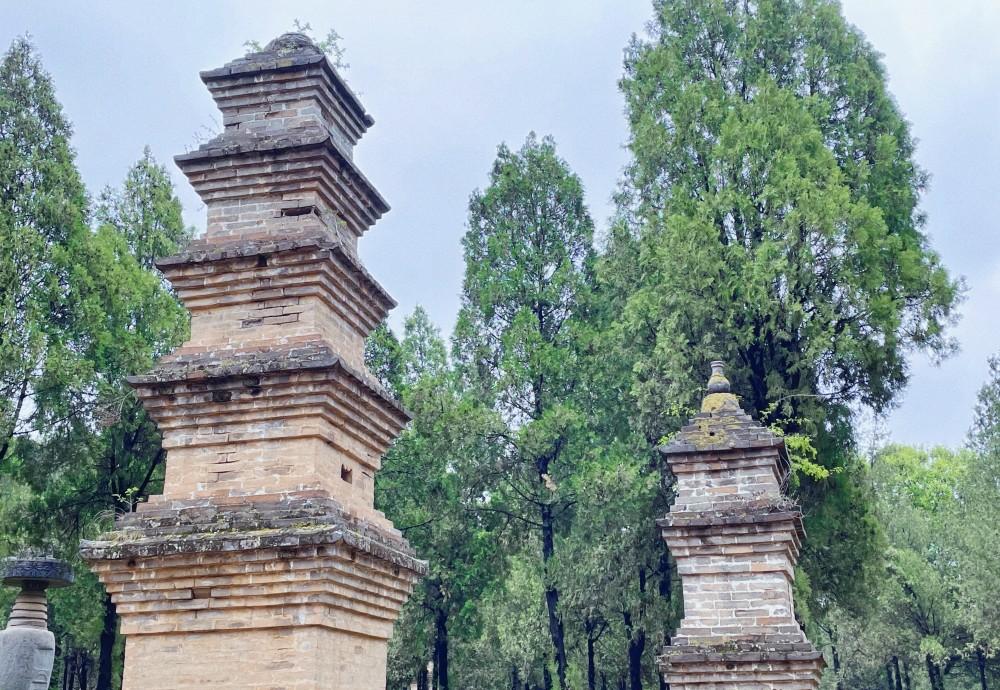Tallinn, where the largest number of high monks are buried in The country, is a Chinese museum of ancient pagoda art and a World Heritage Site
This largest Tallinn in the country has gone through the thousands of years of history of the Tang, Song, Jin, Yuan, Ming and Qing dynasties, buried the monks of the past generations, and is now a well-known world cultural heritage.

It is located in Dengfeng City, Henan Shaolin Temple at the foot of the Shaolin Temple Tallinn, the whole Tallinn retains the Tang Dynasty during the First Year of the 241 tomb towers, covers an area of more than 20,000 square meters, is the mainland existing number of tomb towers the largest number of Tallinn, due to the long history, the scale of the grand, here is also known as the Chinese ancient tower art museum.
The first time you come to the Shaolin Temple, you must visit this ancient Tallinn that has been passed down for thousands of years and integrates architectural art and Buddhist culture. We can see with our own eyes the Buddhist tomb towers that were built in the Tang Dynasty, and there are 6 Tang Dynasty tomb towers preserved here, including the Five Dynasties and the Song and Jin Dynasties, the most of which is the Ming Dynasty, 143 remain, and there are 14 In the Qing Dynasty. Tomb towers from different periods show the changes in architectural art of different eras.
Tomb towers are mostly 1-7 levels, with different systems and shapes, cylinders, squares, hexagons, octagons, etc., with different styles, but the height is below 15 meters. Most of the building materials are stone bricks, and the bricks are exquisitely carved with patterns.
The tomb tower is composed of a tower base, a tower body, and a spire, with a tower front and a tower inscription at the back. A tombstone will also be set up in front of the tomb tower of the monk to record his life and the time of construction of the tomb tower. The tomb tower is placed with the bones and mantles of the monks, which is what the Buddhists call the seven-level floating slaughter.
Among the many tomb towers of the Shaolin Temple, there are also very representative ones, such as the Fa Play Zen Master Pagoda, which was built in the Tang Dynasty and has a long history. It stands in the north-central part of Tallinn, is a four-square tomb tower, 8 meters high, 5 floors of brick towers, lotus pedestals at the bottom, 5 floors each with reliefs, exquisite.
Zhihao Pagoda is a very representative Ming Dynasty tomb tower, also a square pagoda base, brick masonry, buried inside is the abbot of the Song Dynasty Shaolin Temple, and its inscription is also the imperial gift of zishamen.
In addition, there are Xitang Pagoda, Yugong Pagoda, Zhugong Zen Master Pagoda, etc., which all represent the aesthetics of tomb tower architecture in different periods, and different relief patterns also present the history and culture of different dynasties. Tallinn, which has survived for thousands of years, is like a living architectural art museum, and it is also a witness to the Chinese thousand-year-old Buddhist culture, humanities and arts.
Shaolin Temple Tallinn has been included in the World Cultural Heritage List, passed down through the generations, posterity can see the art culture and works that have been preserved for thousands of years, it is the history of the development of Chinese architecture and carving art, and it is also the essence of Shaolin Buddhist culture.